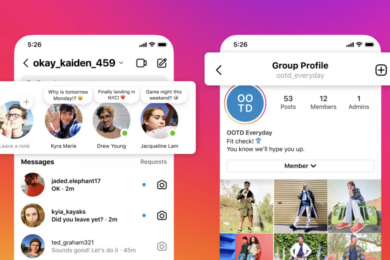
Understanding the Role of Blogging in SEO: Why Blogging is Important for SEO?
Blogging helps you to create fresh content regularly and frequently. Search engines such as Google love fresh content. By consistently adding new blog posts, you can signal to the search engine that your website is active and should be crawled frequently.
Moreover, by creating relevant and high-quality blog posts, you will give website visitors a reason to stay on your website longer. This can increase your pageviews, lower your bounce rate, and ultimately improve your website’s ranking.
How Blogging Helps Improve Website Visibility?
Blogging helps improve website visibility by using keywords in the blog post. When you optimize your blog posts with keywords, it can help to rank your website higher in the search engine results pages (SERPs).
Additionally, blogging can assist in creating link building opportunities. When people find your blog content valuable or interesting, they may choose to link back to your website. This can help increase the number of backlinks pointing to your website, which can improve your website’s authority and ranking.
The Connection Between Blogging and Social Media?
Social media and blogging go hand in hand. By sharing your blog posts on social media platforms like Twitter, Facebook, LinkedIn, and Instagram, you can drive more traffic to your website. If your blog post is shared and liked several times, it will reach a wider audience.
Also, by promoting your blog posts on social media, you can attract new followers and keep your existing followers engaged. This increases brand awareness and helps build a loyal community around your business.
Creating Keyword-Rich Content for Your Blog
Choose Your Keywords Wisely
When creating content for your blog, it’s important to choose keywords that are relevant to your niche and the interests of your target audience. Use keyword research tools to assess the popularity and competition level of different keywords. Try to select long-tail keywords (phrases with three or more words) as they tend to be more specific and can help you rank higher in search engine results pages.
Incorporate Keywords Naturally
Once you have selected your keywords, it’s important to incorporate them into your content in a natural way. Avoid “keyword stuffing” which is the practice of using too many keywords in an unnatural way. Instead, aim to use your keywords strategically throughout your content. This includes in your headline, subheadings, meta descriptions, image alt tags, and within the body text. The goal is to make your content informative and engaging for your readers, while also being optimized for search engines.
Create Quality Content
Creating keyword-rich content is important for SEO, but it’s equally important to create high-quality content that engages your readers. Your content should be well-written, informative, and provide value to your audience. Use headings and subheadings to break up your content and make it easier to read. Incorporate images and videos to add visual interest. The longer visitors stay on your site and engage with your content, the better your search rankings will be.
Optimizing Your Blog’s Structure and Design
Simplify your website structure
Your blog’s structure is crucial in optimizing your website for both search engines and user experience. Simplify your website structure by creating relevant categories and tags. This will help organize your content, making it easier for users to navigate your website. Additionally, it helps search engines understand the hierarchy of your website.
Optimize your website design
Your blog’s design can also affect your SEO rankings. Ensure that your website design is mobile-friendly, has a fast loading speed, and has a clear layout. A well-designed website can lead to a better user experience, which can result in increased engagement and lower bounce rates.
Use headers and formatting
Headers and formatting are essential elements in optimizing your blog’s structure. Use H1 tags for your blog post titles and H2 and H3 tags for subheadings. Properly formatting your content can help search engines crawl your website and increase readability for users. Additionally, use bullet points and short paragraphs to break up content and make it easier to digest.
Promoting Your Blog and Building Backlinks
Promoting Your Blog
Publishing a blog post is just the beginning of the process. You must promote your blog to get the attention it deserves. Share your blog on social media platforms such as Facebook, Twitter, and Instagram. You can also use Pinterest to share images or infographics related to your blog post. You can also include links to your blog post in email newsletters.
Building Backlinks
Backlinks from other websites are important for SEO. They help to establish your website’s credibility and authority. To build backlinks, you can reach out to other bloggers and website owners and ask them to link to your blog. You can also guest post on other websites and include links to your blog post within the article. Another way to gain backlinks is by creating high-quality content that naturally attracts links from other websites.
Measuring Your Success with Analytics Tools
Using analytics tools to measure your success
It’s important to track your progress when it comes to improving your SEO through blogging. There are several tools available that can help you measure your success and make adjustments to your strategy as needed.
One popular option is Google Analytics, which allows you to track your blog’s traffic, as well as where that traffic is coming from. You can also see which keywords are driving the most traffic to your site, giving you insight into what type of content is resonating with your audience.
Another useful tool is SEMrush, which provides in-depth analysis of your blog’s SEO performance. You can use this tool to identify areas where your blog can be improved, such as by targeting different keywords or optimizing your meta descriptions.
Setting goals and tracking your progress
Before you start using analytics tools, it’s important to set specific goals for your blog. This could include increasing your website traffic, improving your search engine rankings, or boosting your engagement on social media. By setting clear goals, you’ll be able to track your progress more effectively and make adjustments to your strategy as needed.
Once you’ve set your goals, be sure to track your progress regularly using the analytics tools available to you. This will allow you to see how far you’ve come and identify areas where you still need to improve. Consider setting up regular reports or dashboards to keep yourself accountable and stay on top of your progress.
Making adjustments to your strategy
One of the biggest benefits of using analytics tools is that they can help you identify areas where your blog can be improved. For example, if you notice that certain keywords are driving a lot of traffic to your site, you may want to create more content around those topics to capitalize on that interest. Similarly, if you notice that your bounce rate is high, you may need to make adjustments to your website design or content to encourage visitors to stick around longer.
By regularly tracking your progress and making adjustments to your strategy as needed, you’ll be able to continually improve your SEO and drive more traffic to your blog over time.


















